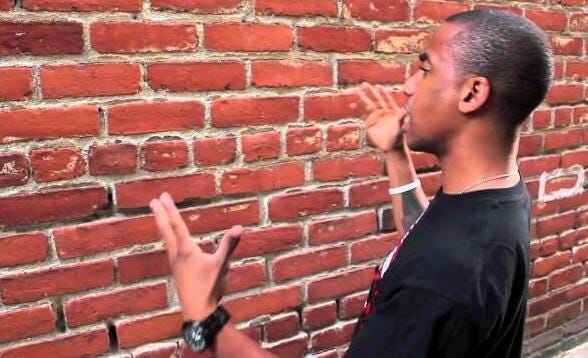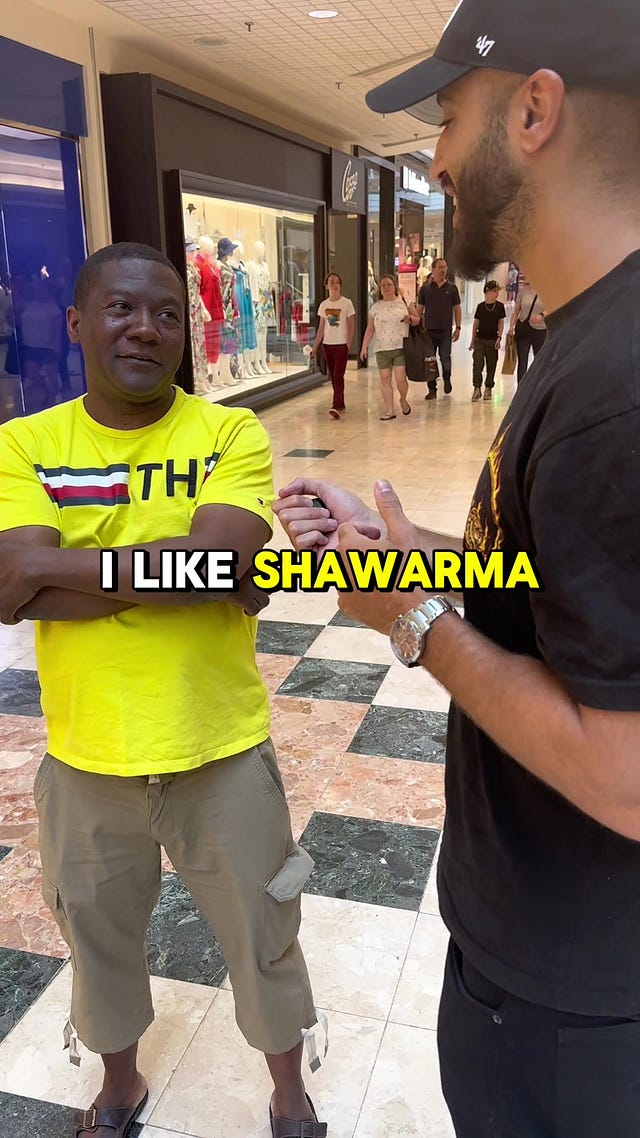Everything I am about to say, I say unbitchily and with love.1
It is nice to feel smart. I take pride in the handful of moments in my life where I have approached true clarity. To communicate an idea such that it can be understood by another person, whether that be a friend or a digital audience, is a virtue of empirical and demonstrable valuable. When that idea proves insightful to them, when it offers them new language or perspective that they will carry with them, it is intoxicating. Knowing how to express ideas explicitly is a craft and a gift. It is a practice around which I have constructed a huge part of my life. It makes me feel good, and it makes me feel smart. It’s easy to get too attached to that last part.
I spend a lot of time thinking about art. I have read film and literary criticism every day since I was 10. I have spent a portion of every day since I was 14 writing criticism. Even if it’s just a stray paragraph in my Notes app, I am constantly thinking about how I translate my analytic process into writing. I have been doing this professionally in some capacity since I was 17. I don’t consider criticism to be my primary artistic mode. But if I were to take a step back and look at what I have spent my life doing, the fact of the matter is pretty obvious. I have spent the overwhelming majority of my creative energy in this life so far writing ekphrastic essays on the art I encounter.
I regret this sometimes. My real passions, like short fiction or filmmaking, go devastatingly underexplored, while I have grown dependent on the comparatively quick turnaround time for essays. It’s inaccurate to say that I write criticism because I cannot make art, but it’s scarily true to say I don’t make art because criticism is more comfortable. People respond well to my writing, and I make money off of it, and it’s nice to produce a comparatively large volume of published work. It is materially advantageous for me to write criticism.
Criticism, as a freelancer, requires being ‘online,’ and I have loved being ‘online’ since I was a child. Of course, this means I have been duped into an addiction to the platforms which give my work the reach to be viable whatsoever. Even if I were to deleted Twitter, or the Substack app, I would still be reckoning with the trends and biases of their user base. Hell, I do not have Instagram or Tiktok, and yet I still wage war with their runoff on a daily basis.
This means that I encounter bad-faith criticism and textual misreading constantly. Stan culture on the internet is a plague, propagated by tech oligarches and their ragebait echo chambers. Fully employed twentysomethings use their precious free time to mob those with minorly dissenting opinions on billionaire popstars. Libertarian rationalists have turned what should be the coolest thing in the world (video games) into a breeding ground of rancid culture war detritus. The constant influx of stimuli beamed into everyone’s brain at all waking hours means that people are encouraged to willfully misread something as blunt as Sinners. Any earnest attempt to offer critical analysis is trampled by the “Let People Enjoy Things” comic or that one “The Curtains Were Blue” diagram.
…but that’s the easy stuff. If you’re reading this, you have witnessed these all one hundred times over. It’s annoying, it’s indicative of a general incuriosity about the world, it’s bad. We get it. Complaining about it isn’t worth the kilobytes of server space the essay would take up.
The general method of combating the waning investment in analytic thought has been advocating for “media literacy,” a practice by which people can learn to parse the messages and idealogical implications of content and art alike. The term has been explored in educational fields for a little less than a century and saw widespread adoption in the 80s and 90s. Children raised in a system with media literacy curricula then grew up to re-apply this approach of skeptical, literal analysis to the entertainment they consumed. In the past decade and a half “media literacy,” as it is used colloquially, often refers to one’s ability to understand the meaning of a story, song, or image.
It’s hard to argue against giving serious thought to the biases and subtext of digital ephemera. Whether it be basic reading comprehension or the identification of AI-generated material, remaining rigorous and astute has never been more urgent a task. Media literacy as part of the American educational system is being actively fought against at every level of government. At a time in history where we have never been more incentivized to disengage from critical thought wholesale, what good would an essay be that aims to police the terms by which we approach art in the first place?
I do not find media literacy to be an unhelpful or dangerous pursuit. It is a prerequisite skill for existence, one that corporations and governments profit off us lacking. But when it comes to art criticism, media literacy has proven insufficient. I do not think it meaningfully corrects for the problems we see elsewhere, I think we are over-reliant on its prescriptive tendencies, and I think it preys upon our worst impulses as critics and writers. The goal of invoking media literacy - not as a pillar of our education system, but as an intellectual dogwhistle- is not to help us communicate more thoughtfully, it is to make us all feel smarter.
In correcting against the treatment of art as homogenuous and disposable, such a rhetorical manuever winds up conflating art with media. Thus, art is something that can be decoded using the common-sense semiotic markers that are typically used in an academic setting when identifying propaganda. ‘Solving’ art like this renders it, ironically, just as homogenuous and disposable as before.
Bemoaning a “lack of media literacy” when confronted with divergent critical analysis allows for the righteous refutation of faulty thought. It implies that the writer has surveyed the entire of a piece of a media or movement- that they have, in the truest sense, “consumed” it. There is a sleight of hand that occurs in these statements - that those who truly understood a show or book would understand it the same way, would like it the same way, would have a uniform reading from which all their observations would be birthed. There is no invitation to grapple with a text beyond its designated ambiguities, no willingness to entertain notions of intra-textual contradiction.
And of course, this sanctimonious approach to criticism does absolute wonders for metrics. It is just good old-fashioned clickbait, and it works. Why do you think I titled the essay like that?
Art, even at its most propagandistic, does not work like fact-checking. There are basic inconsistencies of character or place. There may be unresolved gestures or essential ellipses that completely alter a text’s significance. There are serious differences in interpretation that may all be equally supported by the text, even if some are likely unintended. Variable life experience and medium-specific expertise can radically transform the impact of a work.
Art is not a closed circuit and neither is criticism. It is a beam of light bouncing endlessly between the artist, the art, the audience, and the critic. It is a process that begins at the moment of an artwork’s exhibition and will be kept alive until everyone who will ever see it has died. Sentimentality is as lazy as bitchiness, but I really do mean it when I say good criticism is a love letter. The point of criticism is to love a work enough - even if you don’t like it, even if you hate it - to give it a fraction of your own creative energy, so that it may offer even more to the artist’s audience. A critic, when they succeed, can prompt thoughts that expand to other artwork, in other forms, both past and future. It is not about mastering or consuming or leveraging the creative output of an another in some objective logical proof. It does not end at the assertion of an idea. It begins there.
So if media literacy will not save us, then what is left? I do not have much to offer beyond the elementary ramblings from what will be, almost certainly, a lifelong practice of mine.
I tend to use the term ‘taste’ to describe my guiding principles as a writer. My theory of taste, and thus my holistic theory of criticism, goes as follows:
Taste refers to the manner in which one engages with a work of art. I like this term because it feels both individual and broadly informed. Having good taste is not about what specifically a person likes or dislikes, or how eloquently they argue for their perspective. It is about having a breadth of possible lenses one can adopt to observe a text, and a knack for sensing which critical practice would be best suited for a given work, in a way that best bridges the gap between the critic and the art.
Having taste is about possessing the knowledge base to contextualize a work in a manner fitting for the subject at the hand, and the linguistic prowess to offer a compelling picture of the critic’s perspective, as much as that may or may not be necessary for the project of a given essay.
Having good taste means knowing when to shut up and let people who know better talk. It’s about knowing that you don’t have to say all the other stuff if you only have anything worthwhile to say about the tertiary bits. It’s about expanding and deepening your pool of references. It’s about not basing your sense of self in your criticism. It is a simultaneously about giving all of yourself in supplication to the work in question, however briefly.
It is a fundamentally open, curious, and unsolved communal process.
love ya lots,
helmet girl xx
You may notice I didn’t give any examples in this essay. Mostly, I did this because I don’t think it’s that big of a deal. I did not want to be rude to strangers, let alone my friends. I tried to use examples from my own work, but they were no good. It’s not that I couldn’t find them, but the essay just got buried under giving context for these tenuously related examples that I didn’t think were ultimately very useful. We have all been there.







Really great piece. "Art, even at its most propagandistic, does not work like fact-checking." Nice one. (I also appreciate you sharing this one outside the paywall, thanks for that!)
Great stuff. To me, one of the best feelings in the world is watching a film you first saw years ago and having a completely new view on it. Even if you "understood" the film the first time, your world (or taste, by this piece's definition) has opened up so much that watching it again is a wholly new experience.